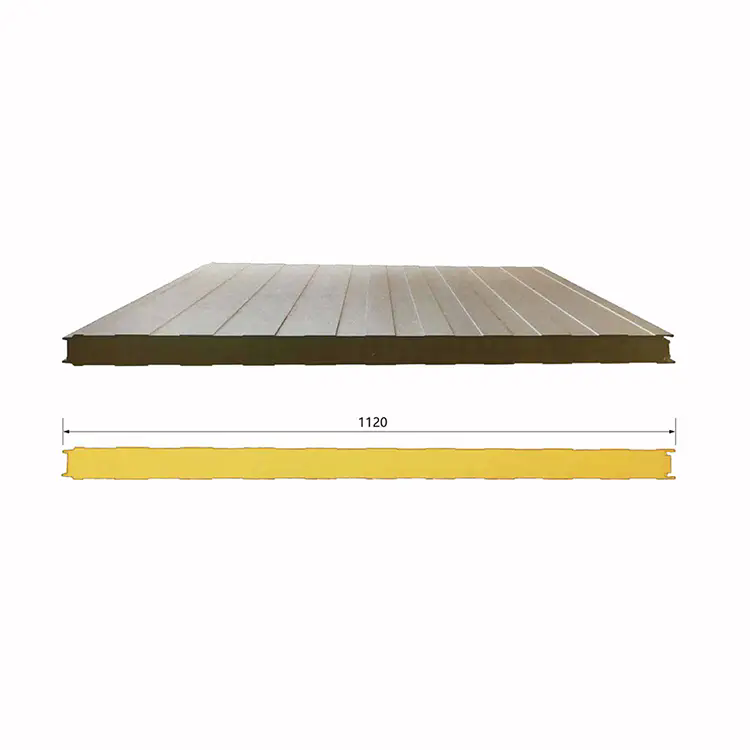What Makes Rock Wool Panels the Ultimate Choice for Modern Construction?
2025-09-03
Rock wool panels have rapidly become a preferred solution in the global construction industry, thanks to their exceptional thermal insulation, fire resistance, acoustic performance, and sustainability. In modern architecture, where energy efficiency, safety, and cost-effectiveness are priorities, rock wool panels provide a superior alternative to traditional materials.
What Are Rock Wool Panels and How Do They Work?
Rock wool panels, also known as stone wool panels, are engineered insulation and cladding materials made from natural volcanic rock such as basalt and diabase. These raw materials are melted at extremely high temperatures — around 1500°C — and spun into fine fibers, which are then compressed and bonded into rigid boards or sandwich panels.
The unique fibrous structure of rock wool panels traps air within the fibers, providing superior thermal insulation and excellent acoustic absorption. Additionally, their mineral composition makes them inherently non-combustible, giving them exceptional fire resistance.
Key Benefits of Rock Wool Panels:
-
Superior Fire Resistance – Non-combustible and can withstand temperatures up to 1000°C without releasing toxic gases.
-
Outstanding Thermal Insulation – Low thermal conductivity (≤0.035 W/m·K) helps reduce energy consumption.
-
Effective Sound Absorption – Noise reduction coefficient (NRC) up to 1.0 for excellent acoustic control.
-
Moisture Resistance – Water-repellent properties prevent mold and mildew growth.
-
Eco-Friendly and Sustainable – Manufactured from natural volcanic rock, fully recyclable, and energy-efficient.
These properties make rock wool panels a go-to solution for industrial, commercial, and residential projects that require high performance and long-term durability.
Technical Specifications of Rock Wool Panels
When selecting insulation or cladding materials, understanding the technical parameters is essential to ensuring optimal performance and compliance with local building standards. Below is an overview of the standard specifications for high-quality rock wool panels:
| Parameter | Specification | Description |
|---|---|---|
| Density | 40 – 200 kg/m³ | Determines insulation performance and strength |
| Thermal Conductivity | ≤ 0.035 W/m·K | Lower values indicate better thermal insulation |
| Fire Resistance | Up to 1000°C | Non-combustible, certified fire protection |
| Sound Absorption (NRC) | 0.75 – 1.0 | Provides excellent acoustic performance |
| Moisture Absorption | < 1% | Water-repellent and prevents mold growth |
| Compressive Strength | ≥ 40 kPa | Ensures panel stability and load-bearing capacity |
| Service Life | 50+ years | Long-lasting with minimal maintenance |
| Environmental Rating | 100% recyclable | Sustainable and eco-friendly material |
These technical specifications make rock wool panels suitable for a variety of demanding environments, from high-rise buildings to industrial plants, where insulation and fire protection are critical.
Applications and Advantages of Rock Wool Panels
Rock wool panels are widely used across multiple sectors, including construction, energy, manufacturing, and infrastructure. Their versatility comes from their ability to combine thermal performance, fire safety, and acoustic control within a single solution.
Key Applications
-
External Wall Insulation Systems – Provides energy efficiency and fire safety for both residential and commercial properties.
-
Roof Insulation – Enhances thermal resistance, especially in industrial warehouses and logistics centers.
-
Partition Walls – Ideal for hospitals, offices, and schools where noise reduction is a priority.
-
Industrial Facilities – Used in power plants, refineries, and factories to meet strict fire and thermal protection requirements.
-
Soundproofing Panels – Perfect for auditoriums, recording studios, and cinemas.
Advantages Over Alternative Materials
-
Compared with glass wool, rock wool offers higher fire resistance and superior acoustic insulation.
-
Compared with polyurethane panels (PU), rock wool performs better under high temperatures and does not emit toxic gases.
-
Compared with EPS panels, rock wool delivers enhanced safety and sustainability while maintaining excellent insulation properties.
By combining these benefits, rock wool panels deliver a cost-effective, sustainable, and high-performance solution for modern buildings.
FAQs: Rock Wool Panel Common Questions
Q1: How do rock wool panels improve fire safety in buildings?
A1: Rock wool panels are classified as A1 non-combustible materials, meaning they do not ignite, melt, or release toxic gases even when exposed to flames up to 1000°C. This makes them ideal for buildings with stringent fire safety requirements, such as high-rise apartments, hospitals, and industrial facilities. By using rock wool panels in external cladding and internal partitions, architects can significantly enhance overall fire protection and reduce risks to occupants.
Q2: Are rock wool panels environmentally friendly?
A2: Yes. Rock wool panels are made from natural volcanic rock and are fully recyclable. Their long lifespan — typically 50 years or more — reduces material waste, while their low thermal conductivity lowers energy consumption, making them a sustainable solution. Moreover, the production process uses renewable raw materials and emits minimal greenhouse gases compared to synthetic alternatives.
Why Choose HANYORK Rock Wool Panels
When selecting rock wool panels, quality and reliability are crucial. HANYORK is a trusted global brand specializing in high-performance insulation and cladding solutions. With strict quality control, advanced manufacturing technology, and compliance with international standards, HANYORK delivers products that meet the highest expectations for safety, efficiency, and sustainability.
Whether you're an architect designing an energy-efficient office building, a contractor working on industrial projects, or a homeowner seeking better insulation, HANYORK rock wool panels provide a premium solution tailored to your needs.
For more details, contact us today to discuss your project requirements and discover how HANYORK can help you achieve superior energy efficiency, fire safety, and long-term value.



